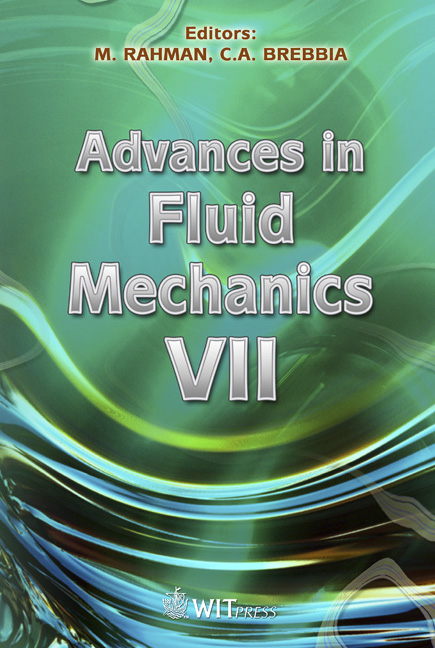Air Flow Induced Vibration Of The Head Carriage Arm In A Simulated Hard Disk Drive Using A Large Eddy Simulation
Price
Free (open access)
Transaction
Volume
59
Pages
10
Published
2008
Size
580 kb
Paper DOI
10.2495/AFM080421
Copyright
WIT Press
Author(s)
K. Sundaravadivelu & Z. Qide
Abstract
Air-flow induced vibration of the simplified head carriage arm (HCA) in a simulated hard disk drive (HDD) is carried out using the large eddy simulation (LES). The dynamic Smagorinsky-Lily sub-scale model is employed to predict the turbulent air flow characteristics between two co-rotating magnetic disks of a simplified 3.5inch HDD model. The HCA is assumed to fly in between the two disks at two different positions viz., inner (ID) and middle (MD) disk diameters, while the disks are rotating at 10000 rpm. Predicted airflow characteristics are found to be in good agreement with the measurements. A large turbulent eddy is formed near the leading edge of the HCA, which in turn amplifies the unsteady aerodynamic forces acting on the HCA. The resulting aerodynamic forces are used as input for the structural analysis to predict the air flow induced HCA vibrations. The magnitudes of the in-plane and the out of plane vibrations when the HCA is positioned at ID are found to be 0.26nm and 4.8 nm respectively. In the case of HCA positioned at MD they are found to be 0.35nm and 11 nm respectively. Therefore it is inferred that in this simulated HDD model study the out-of-plane vibration is stronger than its corresponding in-plane vibration. This may in turn affect the flying height of the magnetic head. The numerical predictions are verified with observations and found to be in better agreement. Keywords: air flow, hard disk drives, large eddy simulation, vibration, HGA, HCA.
Keywords
air flow, hard disk drives, large eddy simulation, vibration, HGA, HCA.





